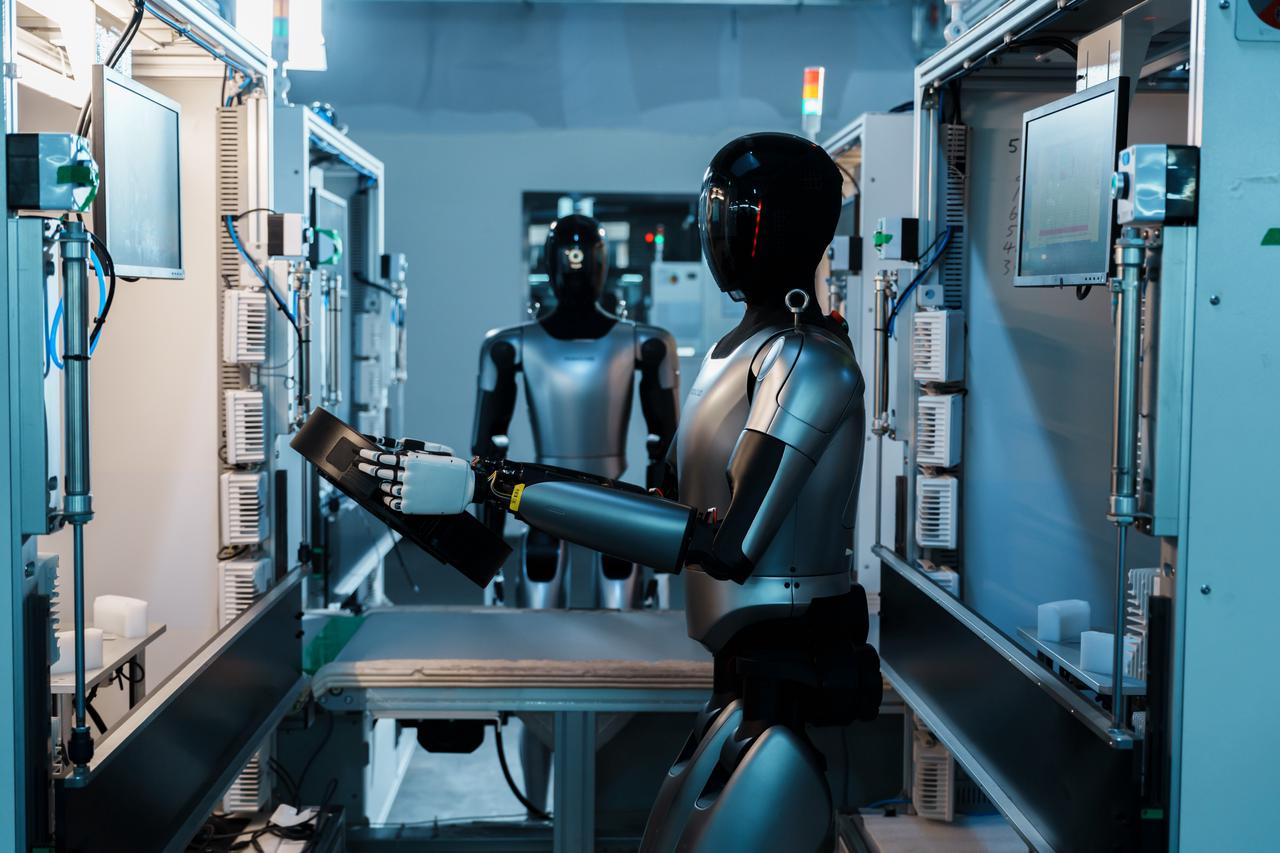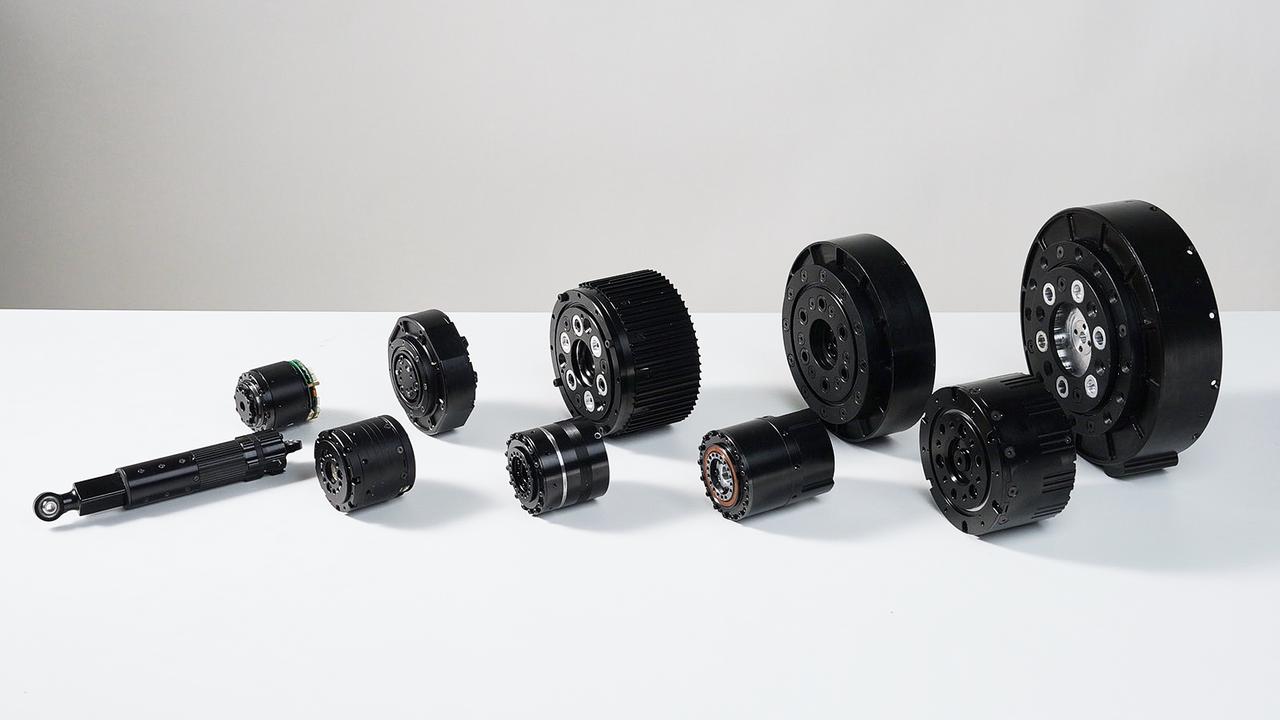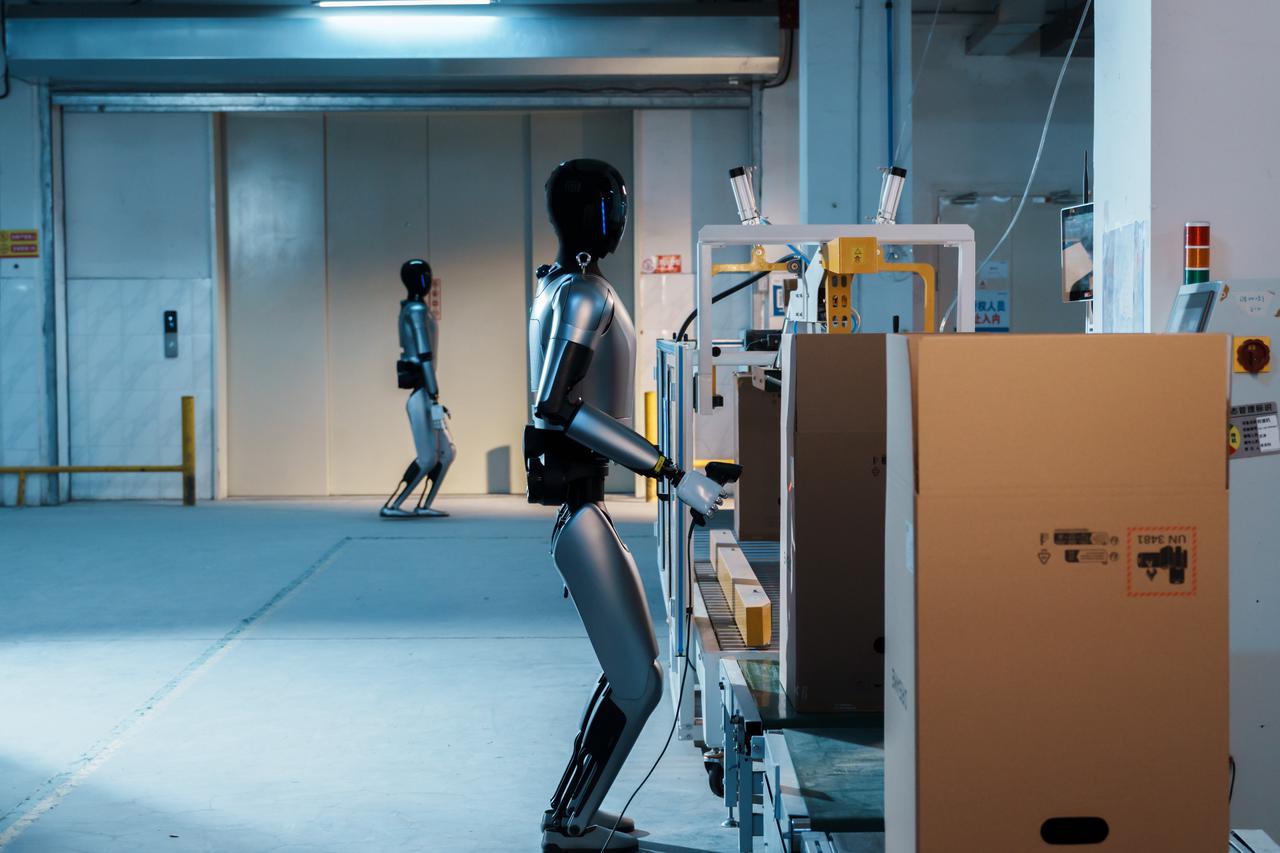MagicLab Robot “Xiaomai” Trained in the Factory, Demonstrating Multi-Robot Collaboration
On December 2, humanoid robotics company MagicLab released a new video showcasing its latest product progress that its humanoid robot MagicBot has entered factory production lines for multi-task training. In the video, several MagicBots can be seen performing product inspection, material handling, parts picking and placing, as well as barcode scanning and warehousing tasks, while achieving small-scale collaboration with one another.
Founded in January 2024, MagicLab is a robotics startup incubated within the Dreame Technology ecosystem, focusing on the R&D and application of robotics and artificial intelligence. Its product portfolio includes general-purpose humanoid robots and bionic quadrupeds. Backed by Dreame’s systematic ecosystem capabilities, MagicLab enjoys significant advantages in commercialization and aims to expand into household, industrial, and commercial application in the future.
MagicBot Showcases Multi-Robot Coordination in Manufacturing Processes
The video highlights MagicBot’s abilities in product inspection, material transportation, parts gripping and barcode scanning. In certain scenes, multiple humanoid robots demonstrate coordinated workflows: for example, one robot lifts a material box from an assembly point and places it at another workstation, where a second robot retrieves components from the box and mounts them onto production equipment.
“Compared with traditional composite robots, humanoid robots—thanks to their anthropomorphic design—offer higher adaptability to complex environments and can flexibly handle varying tasks and production line layouts,” said Wu Changzheng, President of MagicLab. “They are particularly well-suited for 3C and home appliance factories, where frequent production line switching is required. With their high degrees of freedom and humanlike operations, humanoid robots can enhance manufacturing flexibility and reduce factory deployment costs.”
According to the company, MagicBots currently deployed on factory feature 42 degrees of freedom, with each arm capable of carrying up to 20 kg, and a maximum full-body load of 40 kg. The robot’s frame is built from high-strength yet lightweight materials to extend endurance. Under continuous walking and operating conditions, MagicBot achieves up to 5 hours of battery life.
In-House Developed Core Components and Algorithms Empower Factory Applications
Earlier this year, Tesla released a video showcasing its humanoid robot Optimus sorting and transporting batteries in a factory. Similarly, in MagicLab’s recently published video, MagicBot is shown performing a variety of factory tasks, including material handling, parts picking and placing, product inspection and barcode-based warehousing.
These capabilities place high demands on humanoid robots in terms of environmental adaptability, motion control and operational precision.
Take material handling and product inspection as examples: whether the joint modules can provide sufficient torque and strength directly determines the robot’s ability to handle heavy loads.
MagicLab has independently developed a series of joint actuator modules, covering torque requirements of up to 550 N·m. These different module series enable MagicBot to adapt to diverse working environments and integrate into a wider range of production lines and factories.
The in-house actuators also include planetary gear actuators, harmonic drive actuators and linear actuators, featuring high control accuracy and high torque density.
For more refined operations, the humanoid robot’s dexterous hand plays a crucial role. MagicBot’s hand can mimic human hand movements—such as pinching, grasping, holding and lifting—and is capable of using more than a dozen types of tools.
In addition, by fusing data from its head-mounted vision sensors and encoders with a whole-body multi-task coordination control algorithm, MagicBot forms an operational system based on 6D visual servoing and whole-body imitation learning. This floating-base algorithm allows its manipulation capabilities to continuously evolve, enabling the robot to meet the requirements of precise operations even in uncertain production environments.
The factory training footage also shows MagicBot navigating between different workstations and scenarios. Factory environments are complex and dynamic, and moving freely and steadily within them poses major challenges in terms of perception, planning, decision-making, and execution.
To meet these challenges, MagicBot is equipped with multiple types of sensors across its body. By fusing and filtering the data from these sensors, it creates a virtual super-sensing system that provides 360-degree situational awareness with minimal blind spots, along with semantic recognition capabilities. Supported by this perception system, MagicBot uses proprietary navigation algorithms to plan safe and feasible paths, avoid both static and dynamic obstacles in real time, and quickly and safely reach its target workstations.
In-House Developed MagicData AI Engine Driving Advancements in Robot Intelligence
Data forms the foundation of AI models. Through large-scale data training, robots can acquire capabilities in environment recognition, task decision-making and task execution, thereby continuously enhancing their level of intelligence.
MagicLab’s humanoid robot MagicBot relies on four categories of data for model training: synthetic data, full-body teleoperation data, third-party imitation learning datasets and real-time scenario data. These datasets are the result of long-term accumulation during the company’s R&D and production processes.
To efficiently leverage these diverse data types, MagicLab has independently developed the MagicData AI Engine. With this engine, the R&D team can perform data annotation and processing locally and in the cloud, conduct model training within simulation environments, and subsequently deploy the trained models into real-world applications.
Looking ahead, MagicLab plans to further enhance its Sim2Real AI data engine, creating an automated platform that integrates task understanding, digital asset generation, simulated data generation and AI model training. This will enable a fully automated, large-scale and generalized pipeline for data processing and model training.
According to Wu Changzheng, President of MagicLab, the company has already established a comprehensive technological matrix covering the “brain, cerebellum and heart” of robotics, supported by continuous R&D capabilities. With AI-driven advancements in data training, perception and navigation, and precision operations, MagicLab can accelerate the transition from laboratory research to commercial deployment. This also allows the company to accumulate high-value datasets faster, enabling robots to learn from the real world, adapt in real-world environments, and ultimately achieve large-scale applications across diverse scenarios.
MagicLab announced that in Q1 2025, it will officially launch its next-generation MagicBot, with small-batch mass production commencing simultaneously. The new model will be rapidly deployed in industrial and commercial service application.


